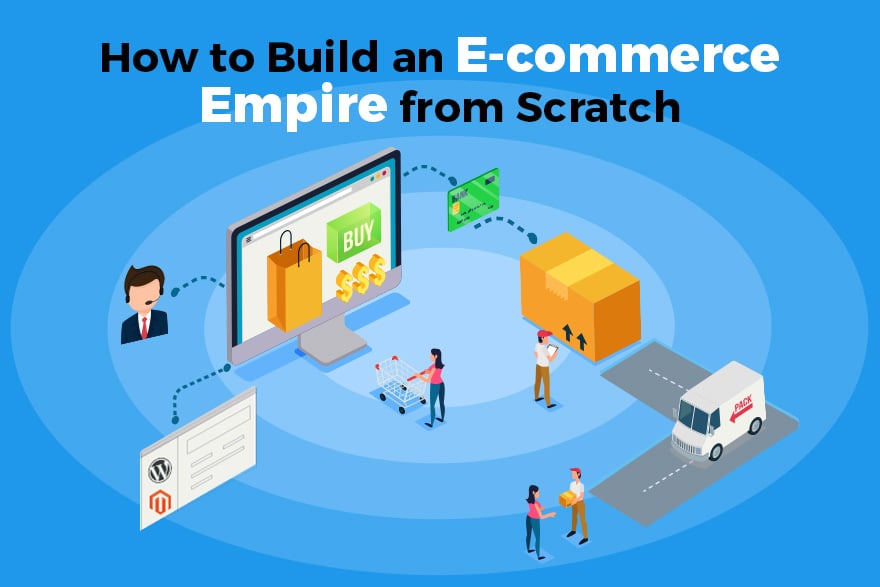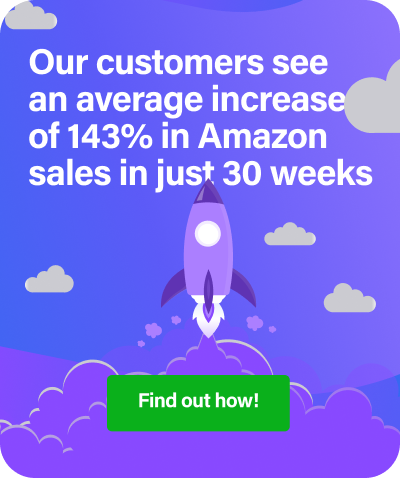Are you taking your first step in the ecommerce system? Ecommerce has grown by leaps and bounds in recent times. However, building an ecommerce empire from scratch is a daunting and challenging task. For every entrepreneur, they are doing their first online business requires much scrutinising, research and evaluation. An ecommerce business undergoes a transition from just a website name to a global platform.
To get to the finish line, you have to walk across specific steps and surmount some typical challenges. A steady generation of leads, sales, and traffic is a must for any ecommerce business. To build one, you need to focus on specific points. Let us walk through some essential tips you should not miss when you start building an ecommerce business.
1. Determining an Ecommerce Business Model
Ecommerce is solely based on two things – customer relationship with the brand and the hassle-free business between store owners and suppliers. This fact involves both sales and commercial transactions and is essential for a thriving ecommerce business. Check out the segregation of ecommerce into six primary business plans and models.
- Business-to-Business
- Consumer-to-Consumer
- Business-to-Consumer
- Consumer-to-Business
- Business-to-Administration
- Consumer-to-Administration
Brainstorm and select one of these business plans or models to become the pillars for your existing business online.
2. Starting an Ecommerce Business
Once you get your foundation strong with the business model, know the purpose of your business. Of course, you should set your goals before diving into this vast world. Here is a checklist before starting your first ecommerce business online.
- Domain registration, purchase, and security
- Business name and registration
- EIN (Employer Identification Number)
- Selection of products and categories and right vendors to purchase and sell
- Design and development of a robust ecommerce portal
- Well-defined marketing strategy
- Content management system to make dynamic changes online
- Proper management of inventory stock
- Payment gateway integration and security
More importantly, it would help if you have a good team that knows ecommerce business.
3. Find Ecommerce Products that Match Your Vision
What is your ecommerce business without products? Nothing.
Every ecommerce entrepreneur should consider the following – you need ideal products that match your vision. Brainstorm and enlist product ideas. Research about them evaluates them against better outcomes. See whether your listed products are in trend. For knowing this, you can check out Google trends. Reiterate the process until you find the niche products.
Now that you are done with your final list consider the USP, benefits, and potential values of your products. This helps you to build products that have the business potential to gauge your store online.
4. Research on Other Online Businesses
Research is the first and integral part of building a strong business foundation. Once you understand the ecommerce strategy, scrutinize your competitors’ move. Are there any barriers? What is the cost of entry? Do your competitors aim at acing their digital strategy?
Know how much energy and money you are investing. This can be enough motivation for your startup, right?
Extensive research in your field can help you better your online customer experience. It also gives you enough understanding to run a successful small scale online business.
5. Choose the Right Ecommerce Platform and Development Company
You can find multiple platforms to develop ecommerce websites. But choosing the right content management system can be a daunting task. You need to focus on a lot of factors like features, speed, and performance. Apart from these essential ones, you should also focus on SEO friendly features. Shopify and WooCommerce, Magento, and Wix provide you with a one-stop shop to develop and deliver a great ecommerce experience.
If you want to go for some budget-friendly options, we suggest choosing an experienced development company to create a competitive online store that is interactive and user-friendly to suit your business requirements. You can find themes for Shopify, Magento, BigCommerce, Wix and WooCommerce online.
6. Dropshipping
Dropshipping is a concept of selling products owned by someone else. Many popular ecommerce sites dropship their products. This is a part of the product acquisition model and also product fulfilment. The process is very simple. As an ecommerce site, you have taken online orders from your customers and forward them to your dropship sellers or partners.
This can be the most significant benefit to any site. As a business, you get the ability to offer an array of products without investing or managing any inventory. It is also an important asset to add value to your online business. You can diversify your products and inventory.
7. Verify Product Quality
Before getting into pricing and designing a brand, we need to ensure product quality. Get in the sample product and subject it too strenuous tests and inspection. The product has to be photographed and dealt with in clear detail in terms of its dimensions, appearance, temperature resistance, climate resistance, etc. In terms of food products, the taste, the contents, the health impact, and more needs to be checked on varied quality parameters.
Assess reactions from sample audience to get feedback from them before taking any further action. If it is overwhelmingly negative, understand what is going wrong and make amends. Else, just move forward to the next step.
8. Defining the Right Pricing Strategy
Today’s customers are quite price-conscious and hence one should put in enough research about the market value of the product. Also, to reap profits, one should have reasonable profit margins. And the margins can be decided with a smart pricing strategy. Assess the product and develop a product pricing strategy based on product demographics and sales insights. If you are a drop shipper, know your product sales and how you can earn profit from the product’s USP.
9. Creating and Designing a Brand
In this competitive race, you ought to create your own identity. Else, you might lag. To make a strong identity online, create and design a unique brand. For this, you can start with a brand name, brand logo, website theme, etc.
Your brand is your unique identity and no one can take it away from you. For a thriving empire, choose to go the simple but the different way. Create an easy-to-navigate and user-friendly website which attracts customers to your brand and entices them to make a purchase.
10. Customer Service
Create and define a customer service strategy to target your commerce products depending on your intended audience and their demographics. For any online business, a 24/7 customer service is always a must. Most customers want their concerns and questions addressed promptly. If not, chances are they might abandon their online transactions and leave you high and dry with no business.
Exceptional customer service is critical to the success of your online business.
- Create informative content or a FAQs page that aids the buyer’s journey
- Provide incentives and discounts time and again to loyal customers
- Ask for product reviews based on their purchases and give an additional discount based on their reviews for further purchases
- Offer 24*7 live chat support
- Address the concerns voiced out through message or emails or posts on social media respectfully and precisely.
11. Payment Options
Have you ever thought about the payment options for your ecommerce business?
Customers demand a secured payment option after a successful checkout implementation. To integrate the secured payment gateway, invest your time in researching. Check out what payment options your competitors have invested in.
Would you choose Paypal or Authorize.Net or SecurionPay or Stripe? What are the attributes of each payment gateway option that stands out from the rest? Are some particular features more helpful to your ecommerce store, and you cannot miss out on the same?
Once you have done your homework, focus on what your target audience is comfortable with. Start with integrating one payment option and then widen the scope of payment gateway options as you progress.
Conclusion
Do not focus on profits first. Focus on building a quality ecosystem for your customers online. As an entrepreneur, you should understand business and customer values. Plan an effective business model and then strategize your product pricing and selling points. Create a website that defines your presence with simplicity and then back it up with great customer experience. Work diligently on sales since it is the driving force of your business.



